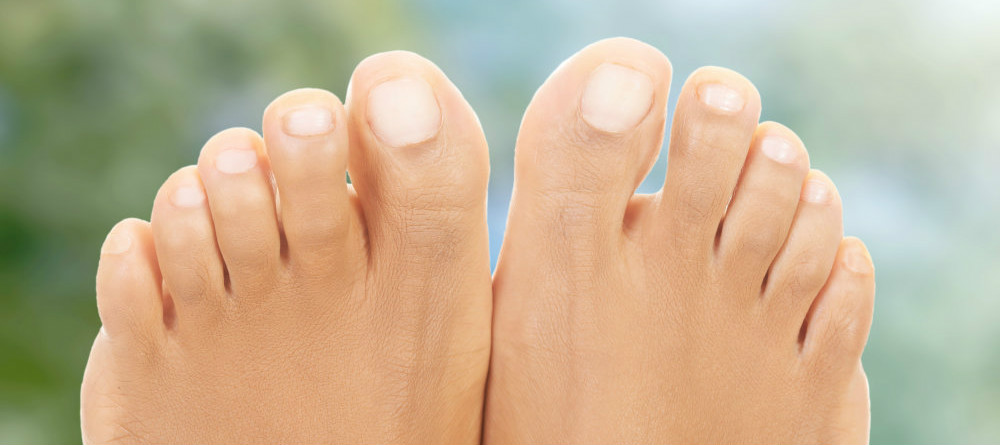Don’t Rely on “Luck o’ the Irish” for Your Fungal Toenails!
Forget the equinox. For our money the unofficial start of springtime is St. Patrick’s Day! The days are getting longer. The Capital District has (usually) fully thawed from its deep freeze. Folks are out and about, enjoying the parades (and possibly a few libations—responsibly, of course).
If your toenails are looking a little funky, however, the incoming warmer weather has at least one obvious drawback. For many people, spring and summer means sun, sandals, lazing by the pool, and “gettin’ your nails did” (as the kids say it these days, we understand). If you have the unmistakable mark of a fungal infection, though, you have two unsavory choices—either keep them locked away in closed shoes all summer long, or put them on display and risk the embarrassment.
Wait, did we say two choices? There’s actually a third one, and it’s the best option by far. Get rid of them for good, with professional fungal nail care done right at Capital District Podiatry.
No Amount of Time or Luck Can Solve Your Problem
You might be thinking to yourself that, if you just wait long enough, maybe you’ll get lucky and the infection will go away on its own. Unfortunately, there’s no pot of gold at the end of this proverbial rainbow—unless by “pot of gold” you mean the dull, yellowish discoloration staring back at you.
That’s because, from the perspective of a dermatophyte fungus, the space under the toenail is sort of like a never-ending all-you-can-eat buffet at Fort Knox:
- There’s a practically limitless supply of keratin, the fibrous protein that provides structure to skin and nails (and the primary source of nourishment for the fungi).
- The nail itself provides an excellent defense against topical medications. Antifungal oils, creams, and sprays can’t penetrate it.
- Because the toes get lower, slower circulation than almost every other part of the body—especially if you have diabetes, but even if you don’t—oral antifungal medications often work slowly and are more likely to fail.
Plenty of food and solid protection means an untreated fungal nail infection can go on indefinitely. Years. Decades. Effectively forever. And of course, the longer you have it, the more likely it’ll get worse, or spread to other toes, or to your skin (as athlete’s foot). There’s even an outside chance you’ll spread it to someone else in your household indirectly—for example via a shower shared by multiple family members.
Breaking Down the Defenses
Traditionally, oral medications were used as the primary treatment option for toenail fungus. (It’s still the best option for many practices and clinics nationwide).
While this is much better than doing nothing, there’s still quite a bit of luck involved. The treatment frequently fails, with cure rates only around 75% overall (and lower for patients who are older or have diabetes). Even worse, the oral medications can cause significant side effects in some people, including liver damage.
Fortunately, recent technological advances allow us to take a safer and more effective approach. This includes:
The Cutera Genesis Laser. It’s not science fiction. Laser beams have varying properties, including wavelengths, frequencies, power, and energy—and when the light is focused just right, it can have astounding therapeutic effects.
The Cutera laser is completely harmless on human skin and tissue, and it’s able to penetrate through a thickened nail plate without much resistance. A built-in sensor regulates temperature, keeping the procedure as comfortable as possible for the patient. However, it is deadly for dermatophyte fungi.
Just one to two sessions and a follow-up check-in are usually all you need to eliminate the infection.
Clearanail. Topical medications are the best treatment options for most fungal infections—athlete’s foot, for example—but have too much difficulty getting under the nail. Clearanail solves this problem by drilling microscopically tiny holes (less than half a millimeter thick) in the nail, which allow antifungal sprays to get through.
Don’t worry—everything is computer controlled. A highly advanced sensor and failsafe system can pinpoint the precise width of the nail and shut off the system before harming the nail bed. The whole process takes about 20 minutes in our office, and there’s no need to come back once the holes are in place. You just apply the spray every day, and let the medicine do the work.
Seeing It Through
With each of these treatments, some visible improvement in the nail will occur fairly quickly—within a couple of months for the laser, and sometimes as quickly as two weeks with Clearanail. However, in each case you’ll still have to wait the full 6-12 months it takes your fingernails to completely replace themselves for the best results. Keep that in mind before you think “I’ll wait until next spring.”
It’s also important to remember that eradicating a single instance of an infection doesn’t mean a new one can’t develop later. If you really want the fungus gone for good, you should take foot hygiene seriously and make smart choices to prevent reoccurrence. This includes keeping feet clean and dry, using antifungal sprays or powders in your shoes, wearing moisture-wicking socks and breathable shoes, and never going barefoot in public (especially locker rooms, pool decks, community showers, etc.)
Luck doesn’t have to enter the equation when you get your toenails treated by Capital District Podiatry. If you want the most aggressive, effective, and fastest-acting treatment options for your condition, give us a call today at (518) 273-0053.
Troy Office
763 Hoosick Rd.
Troy, NY 12180
Clifton Park Office
855 Route 146 | Suite 150
Clifton Park, NY 12065
© Capital District Podiatry, LLC. All Rights Reserved.
Notice of Nondiscrimination | Privacy Policy | Terms & Conditions

